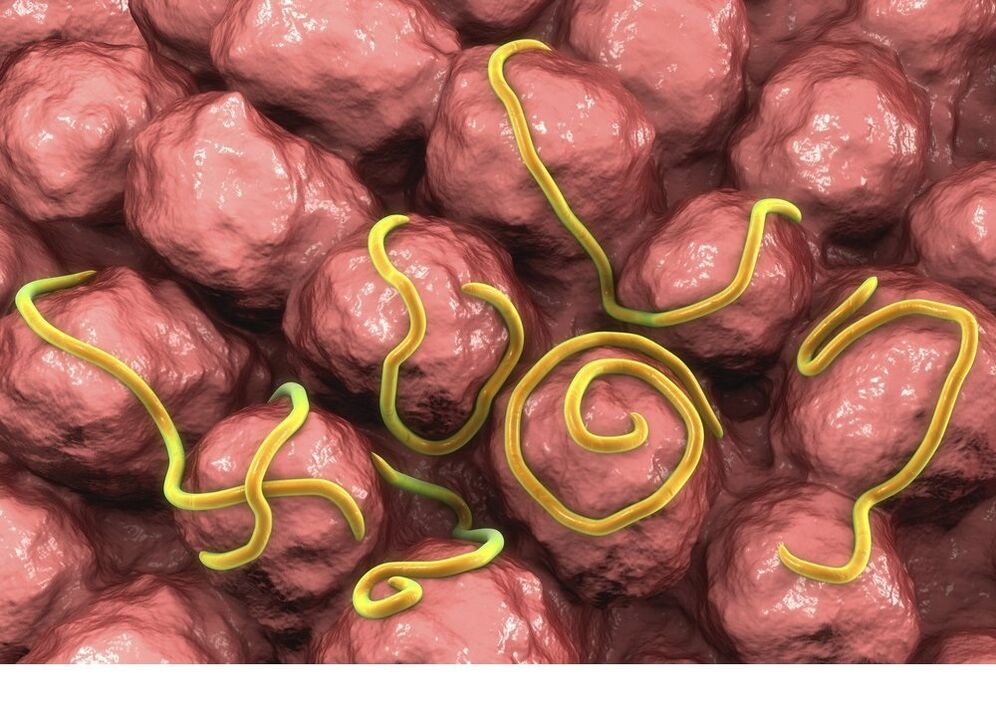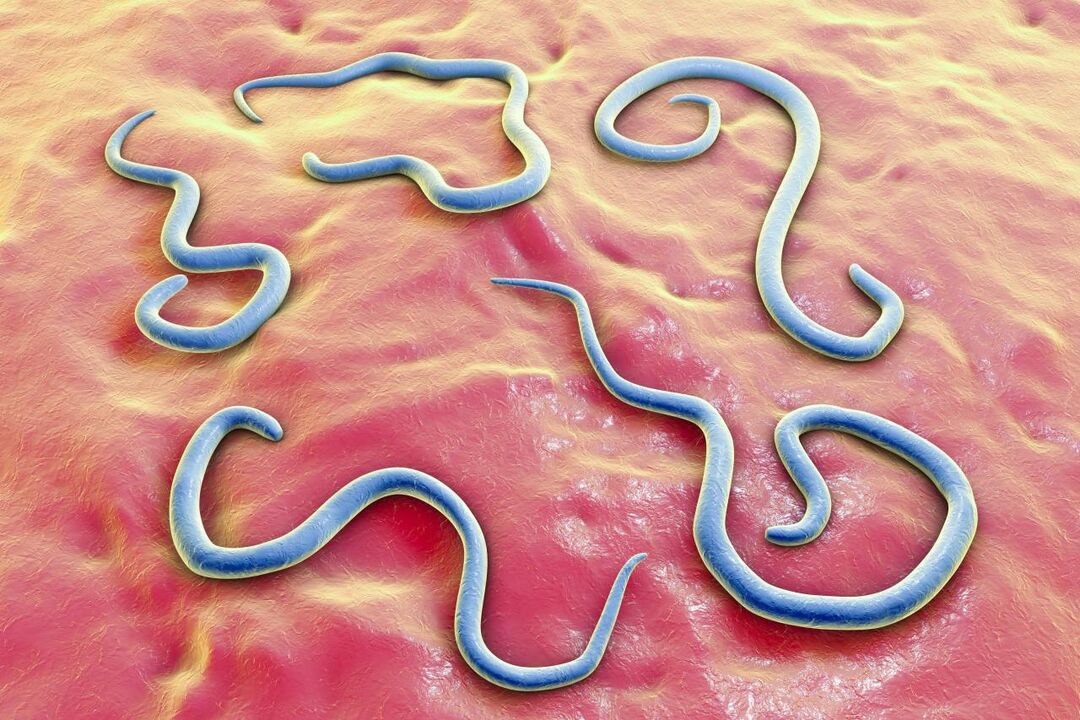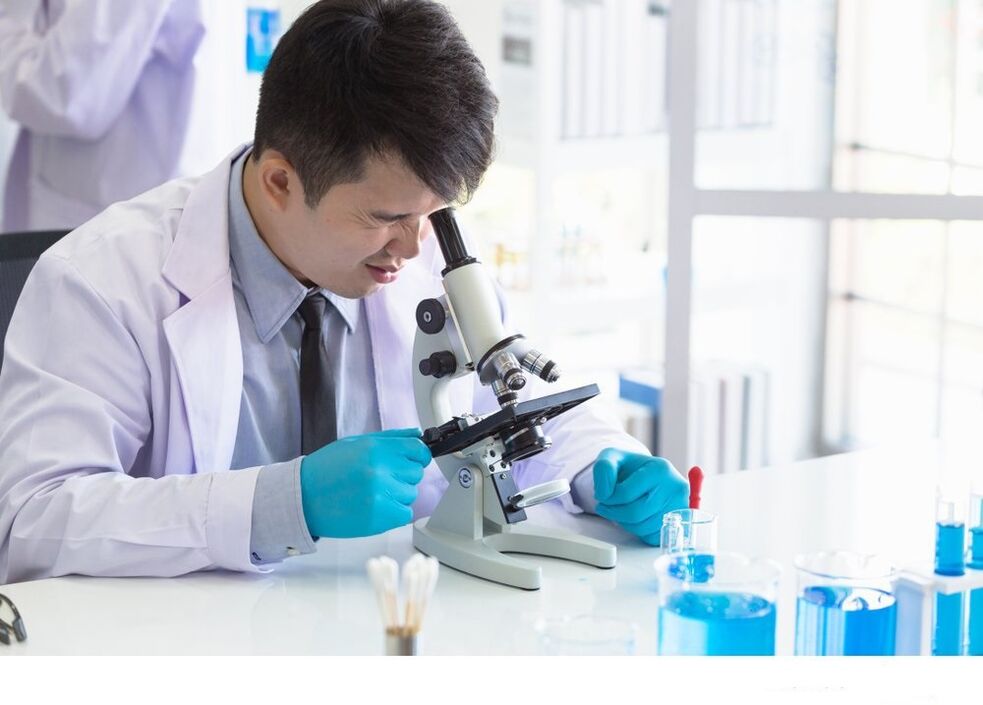Trichinosis, or helminthic disease, is one of the most common diseases in humans. According to preliminary estimates by experts from the World Health Organization, one in four people on the planet is infected with another type of worm. And that's not surprising, because you can get this infection almost anywhere in the world. Doctors equate the incidence of helminthiasis with the spread of influenza and ARVI.
Doctors estimate the scale of worm infection in our country at 270 cases per 100 thousand population, but the actual incidence, according to experts, is many times higher. This is because often a person does not even notice that an uninvited guest has settled in his body. If helminths do not manifest themselves in any way, the disease may remain undiagnosed for decades.
All about worms
Parasitic worms, roundworms or filariasis?
This vast group of organisms goes by many names at once. First of all, we are talking about parasites, i. e. organisms that live at the expense of others. In addition, we are talking about endoparasites, that is, living inside another organism - in its tissues and organs. Finally, we are talking about worm-like organisms, which are ideally adapted to live long in the bodies of infected animals and reproduce efficiently.
Accordingly, helminths are parasitic worms. The term "helminth" was once introduced by Hippocrates. Among the people, these nasty creatures are also called worms - from the Ancient Greek, which means only a parasitic worm.
So, speaking of helminths, we will not be confused, calling them filariasis or helminths. And if we are talking about helminthiasis, these diseases can also be called "parasitic infections. "
Various types of helminths in humans

In total, scientists know about 287 types of helminths that can parasitize humans. In our country, only 65 species have been identified, and only 24 species are the most common.
Human helminths live throughout the body, and each species has its own preferences.
Basically, worms prefer the digestive tract and mainly the small intestine, in which you can find roundworms, pinworms, three types of tapeworms, broad tapeworms, hookworms, etc. v . . . Vlasoglav alone occupies the large intestine.
In the liver, more precisely in the biliary tract, as well as in the gallbladder, lung flukes, lung flukes can be found. . . Lung flukes settle in the lungs. Trichinella affects muscles. The adult tapeworm lives in the small intestine and its larvae (cysticercus) can be found in the eyes and central nervous system. Schistosomes (helminths from the tropics) prefer the veins of the gastrointestinal tract and genitourinary system.
Filariae are generally ubiquitous - they can be found in the lymphatic system and in closed body cavities - in the retroperitoneal cavity, in the pericardial sac, and their larvae are commonly foundin the blood or in the skin.
Types of worms that live in humans
Worms, which are of most interest to doctors, are divided into two main categories: flat and round (roundworms). The classification is based on the cross section of the worm's body: in roundworms it is round, in flatworms it is flattened in the direction from the conditional back to the conditional abdomen. Flatworms are divided into two classes: tapeworms (flukes) and tapeworms (cestodes).
- Nematode. Most roundworms are inhabitants of the human intestine. This group includes roundworms, pinworms, Trichinella, whipworms, etc. v. , which vary widely in size - from a few millimeters to 1. 5 meters. They all have well-developed digestive systems. Nematodes have both males and females. They are not difficult to distinguish in adults: females are usually twice as large, and besides, in males, the "tail" is twisted towards the "belly".
- Leaf fluke disease. The body of the fluke is leaf-like or lance-shaped and cannot be compared in size with other helminths: these are small worms, ranging from a few mm to 3. 5-5. 5 cm long. Unlike roundworms, tapeworms have a pair of suckers in the mouth and abdomen. Their digestive system is in its infancy. A significant portion of species in this group are hermaphrodites, that is, they combine features of both sexes. The exception is schistosomes, which are both male and female.
- Code. Cestodes are worms, which are a long ribbon divided into several short segments, at one end of which there is a hook and sucker hair. These worms live only in the small intestine - their whole body is not suitable for any other organ. And this is not surprising, since the length of the tapeworm can be up to 10-11 meters. They don't need a digestive system at all, as they absorb everything they need from the food a person eats. All tapeworms are hermaphrodites.
The organism in which the helminths live in the larval stage is called the intermediate host (which can be animals, fish, mollusks, and of course humans), and the adult carrier is called the terminal host. and.
Depending on whether a certain type of worm has a developmental stage in the body of the intermediate host, they also indicate biological helminthiasis and helminthic infection.
- Geohelminths do not have such a phase. The eggs of the worms fall into the soil, where they wait until, by the will of fate, they are introduced into the body of the future owner. Earthworms include whipworms, roundworms, hookworms, etc. v.
- Biological worms have one such stage, and may have several hosts. Examples include Trichinella, tapeworms, schistosomes, all flatworms, etc. v.
Some scientists now, by the mechanism of transmission, have distinguished a third group of worms - infectious helminths, which include pinworms (helminths) and dwarf tapeworms (biological helminths). These parasites are spread by contact with an infected person.
In addition, depending on which host plays an important role in the life of the helminth, anthracnose and animal disease can be isolated.
- The first category includes helminthiasis, in which a person is an obligatory stage in their life cycle: ascariasis, intestinal worms, etc. v.
- Zoonose includes helminths, pathogens can successfully survive without humans, but at the same time our species is susceptible to them, and if infected, the worms will not interfere with life. life and prosperity. This category includes ophthalmopathy, diphyllobothriasis, etc. v.
How does helminth infection happen?
Usually, people become infected with worms, orally speaking, i. e. swallowing worm eggs. The most prominent example is pinworms, eggs that a child can pick up in a sandbox (a way of infecting contact families). The erosive pathway (via food) is characteristic of roundworms - through contaminated vegetables or fruits and tapeworms that enter the body by eating contaminated seafood or meat that is poorly processed with heat, etc. v.
However, food is not the only route of infection with helminths. Eggs can enter the human body through inhalation of dust. Hookworms and helminths enter the body through the skin - and they're called infectious worms, the route of infection is through the skin. And because schistosomiasis can be picked up while swimming in a pond, this route of infection is also known as aquatic.
In the tropics, the filamentous plant, which is also wuchereria, is spread by mosquito bites. And this is the route of infection by vectors.
Helminth infections can also occur from contact with animals - infected dogs and cats. Usually, people get roundworms (toxocars, etc. ) and tapeworms from animals. Pets, in the process of licking, carry helminth eggs through their fur. A person who caresses such an animal and does not immediately wash his hands runs the risk of injecting an infection into his mouth. Another option for worm infestations is to clean litter boxes without wearing gloves.
How do worms affect the body?

Mechanical impact
This category includes any helminthic action in which the integrity of the host's tissues is compromised. For example, adult helminths have hooks and suckers that immobilize themselves with their help and damage the lining of the digestive tract. As a result, tissue erosion develops in the area of \u200b\u200bthe worm residence, ulcers are formed, and the nutritional process of the mucous membrane is disrupted, which can even lead to its death (necrosis). .
Moving through the body, so-called migratory larvae can also cause bleeding and inflammation in damaged areas - this makes it easier for them to penetrate deeper into tissues. And intestinal worms often provoke the development of appendicitis, intestinal obstruction and even bowel rupture.
Finally, the cyst, which has entered the brain and is actively growing there, compresses the tissues, which can lead to the death of a person.
The host is malnourished
First, the worms "rob" the host, consuming the food they have eaten. Second, some species of human helminths feed on their own blood - this is what hookworms and whipworms do, or they take in substances necessary for hematopoiesis. Therefore, against the background of parasitic infection, anemia can develop.
When chronic helminth infections persist, which absorb metabolically valuable nutrients, the diagnosis is calorie-protein deficiency.
Poisoning the human body with helminthic toxins
The metabolic products of flagellates and tapeworms destroy erythrocytes, ascaris secretions causing capillary dilation and, as a result, hemorrhage.
Some species of parasitic worms begin to pose an increased danger after death, releasing substances with necrotic and hemolytic properties.
Allergy to helminth proteins
Worms are alien to us, so our bodies consider many of the proteins they secrete (during vital activity or after death) as potential hazards and may consider themas antigens. During sensitization to these antigens, antibodies are formed - immunoglobulins IgE and IgG-4. These antibodies when in contact with mast cells, basophils and eosinophils cause their destruction. At the same time, there is a release of substances that trigger allergic reactions (allergy mediators) - histamine, serotonin, heparin, etc. v.
Inhibits the body's defenses
The negative effect of helminths on the body can be indirect. Tapeworms, as mentioned above, in the small intestine, can reduce the acidity in the stomach. And this greatly reduces the body's ability to protect against the entry of pathogenic bacteria into the body.
Many species of helminths are immunosuppressive, that is, they suppress the body's ability to defend itself, thus ensuring a comfortable existence for a long time. This is an evolutionary adaptation they have acquired during adaptation to a narrowly defined host circle. But a suppressed human immune system leads to an increased susceptibility to other infections and diseases.
Risk of cancer

Some chronic helminthic diseases significantly increase the likelihood of cancer. Parasites in the process of their vital activity destroy tissues and organs and thereby provoke the development of malignant tumors in this place. Cancer often develops against the background of fascioliasis, schistosomiasis, fascioliasis, etc. v.
Stages of helminthic infection
What are the signs of helminthiasis? After the worms have entered the body, the symptoms of infection will depend on the stage of the disease.
In the process of helminth infection, there are 4 main stages:
- Acute (early) stage of helminthiasis. At this stage, the pathogen enters the human body, leading to sensitivity to the proteins of helminths. The first symptoms of helminthiasis appear 2-4 weeks after infection. Often during this period, allergic-like reactions develop - itchy rashes on the skin, conjunctivitis, cough, swollen lymph nodes, inflammatory processes in the joints, the analysis shows an increase in concentrationeosinophils, etc. v.
- Latent (latent) stage. At this stage, the helminths develop to an adult state and are finally determined to live permanently, after which the helminths move into the chronic stage.
- Chronic (late) stage. At this stage, adult helminths actively reproduce, producing tens or hundreds of thousands of eggs and larvae, which enter the external environment or spread to other organs of the body. Toxocariasis in children can cause muscle spasms, convulsions - epilepsy, hysteria, . . . Doctors note that all of the signs of this trichiasis are non-specific and, like symptoms of dozens of other diseases, cannot be diagnosed. More precisely, there are several types of helminths, the symptoms of which are very characteristic, but even they need to be checked with several tests.
- Release phase. This term means the patient's complete recovery, or the patient's disability due to complications of helminthiasis. These include malignancies in fascioliasis and schistosomiasis, cirrhosis, etc. v.
Worms: symptoms of infection

How the infestation of helminths (the penetration of helminths into the human body) will affect the human body is determined by many factors: mode of entry, degree of infection, duration of illnessand the lifespan of helminths, its characteristics. nutrition and growth cycle.
In general, doctors distinguish the following symptoms of helminth infection, when you have these symptoms you should consult a doctor and examine:
- cyclically frequent nausea and vomiting, abdominal pain;
- frequent allergies;
- sleep disturbances, chronic fatigue, irritability;
- itching in the anal area;
- frequent urinary tract infections;
- chronic gastrointestinal diseases, dysbacteriosis;
- symptoms of chronic intoxication of the body: frequent colds, blue circles under the eyes, pallor, enlarged lymph nodes;
- vulvovaginitis;
- increased level of eosinophils in the results of blood tests;
- growth retardation and weight.
The question arises: if helminths have settled in the body, will the symptoms of infection appear immediately or only after a while? Are there worms that are difficult to detect signs of infection? Doctors point out that with a non-intensive invasion, the first symptoms of helminthiasis can appear in a month or two and after a few years. That is, during this time, there will be no signs of helminth infection.
Manifestations of helminth infection in children
Helminthiasis is more common in children than in adults. This is explained by a lack of hygiene skills, as well as close contact with the environment that can be a source of infection with helminths. Such an environment could be a sandbox in a playground, a bed in a grandmother's chalet, other people's toys played by an infected child, etc. v.
What are the most commonly reported complaints when a child is infected with intestinal roundworms:
- gastrointestinal dysfunction - 75% of children;
- allergic reactions - 71%;
- sleep disorders - 54%;
- appetite disorders - 44%;
- pain in the abdomen - 40%;
- itching in the anal area - 36%.
Less often, due to helminthic infections, children develop immune disorders (19%) and bruxism, i. e. teeth grinding (16%). It is a paradox, but these two symptoms are often considered by the general public to be signs of helminthiasis.
Diagnosing helminths
What are the worm tests?

It should be understood that helminth analysis alone is not enough. There is no currently available method for autologous parasitic worm detection that can be used as a basis for a definitive diagnosis. According to doctors, in some cases it only takes 8-10 times to get a positive result! There can be many reasons for this: females lay eggs at different intervals than at the time of sampling, the biological material sample turns out to be empty, from the wrong place, the disease is at an early stage. determined by selected methods is almost impossible, v. v.
The most common types of helminth analysis are stool studies for helminth eggs, perianal curettage, duodenal contents analysis, biomaterial analysis from the patient's lungs, blood tests for helminths, v. v.
Less often, urine is required for the diagnosis (genitourinary schistosomiasis, intestinal worms), a study was performed of helminths in the patient's muscles (filariae) withbiopsies of the material.
How to test stool for helminth eggs?

For the analysis of helminths, 50 g of the patient's stool is enough (about 1 tbsp). Today in the pharmacy you can buy a special clean container for testing, where you will need to collect stool to look for helminth eggs. It is better to bring the sample to the laboratory on the same day (for strongyloidiasis and strongyloidiasis - no later than 4 hours after collection). If necessary, you can store helminth stool samples for no more than a day at a temperature between 0 and 4 ° C, absolutely do not freeze. In principle, special preservatives can be used that allow the sample to be stored for up to several months.
Shaving around the anus - analysis of helminth eggs
Perianal scraping is used to diagnose helminthic diseases such as intestinal helminths, gnathostomiasis, gnathostomiasis, . . . Unlike stool analysis for helminths, scraping material is obtained from the skin around the anus using a cotton swab, wooden spoon, glass eyedropper, or tape. The data collection procedure for the analysis of helminth eggs was carried out in the early morning, patients should not shower in the evening or in the morning.
An important point: even a repeated analysis for helminths in this way does not guarantee the reliability of the results in the case of helminth infections. The female pinworm lays eggs at regular intervals, and if you don't catch the "time" you can be sure that there are no eggs - no worms.
Analysis of duodenal contents (bile)
Bile collection is done using an empty stomach tube. Since this method is invasive (unlike methods such as fecal evisceration, urine collection, and perianal curettage), it is prescribed for strict indications only when there is a reasonable suspicion of an infection. specific worms. Bile is examined for strongyloidiasis and hookworm larvae, and individual sections of bile are also analyzed for the presence of helminth eggs living in the pancreas and hepatic ducts.
Blood test for worms

In addition to the above methods, there are also methods called serology for the diagnosis of helminthiasis. In this case, a blood test is done to look for helminths, more precisely, for antibodies to them.
The main current serological method is the enzyme-linked immunosorbent assay (ELISA), which is distinguished by its high specificity and highest sensitivity (90%) among all other methods. That is to say, it allows you to fairly accurately determine which worms a person is infected with and allows you to detect them, even if there are very few of them. The confidence of ELISA is 60%. ELISA is extremely suitable for the detection of so-called tissue helminthiasis, in which the worms are parasitic inside a patient's organs and tissues (triastomiasis, toxocariasis).
Method of diagnosing helminth diseases by tools
It is far from possible to detect helminthiasis using the above-mentioned laboratory diagnostic methods, including the use of immunological analytical methods. Some species of parasitic worms have dense shells that are resistant to external influences. They can also hide in tissues that are to some extent protected from the body's inflammatory responses - such as the spinal cord. Certain types of worms have their own means of defense - enzyme resistance. Worms that can reproduce sexually exchange genetic information. Given their rate of reproduction and renewal over many generations, it is not surprising that such helminths have become less vulnerable over time thanks to the means of detecting and treating parasitic infections. .
If stool analysis for helminths, blood and other methods does not work, in this case those parasites can be detected using instrumental diagnostic methods - X-radiography, ultrasound, computed tomography, etc. v. the tissues of the liver and spleen, enlarged lymph nodes behind, and finally, in some cases - echinococcus, the large plexus of intestinal worms - you can see the parasite.
Treatment of helminths
Traditional medicine, through trial and error, has discovered several plants with deworming properties: poplar, pumpkin, chrysanthemum, medlar, male poplar, etc. v . . . effect:
- cucurbitin (pumpkin seeds);
- annual wormwood artemisinin);
- ascaridol (ambrosia);
- santonin (wormwood citrine);
- thymol (thyme);
- pelletierin (pomegranate root);
- carvacrol (oregano, thyme, bergamot);
- diospirol (sapodilla);
- arecolin (lamb palm);
- pyrethrins (dalmatian chamomile);
- tremulacin (aspen);
- nicotine (tobacco) and its isomer anabazine (tobacco and leafless);
- emetine (emetic parent).
And today, a significant portion of anthelmintics contain the same active ingredients that once provided deworming effects to decoctions and tinctures.
conclude
- Trichinosis is one of the most common diseases in the world. Any person in his environment with 100% probability has humans and animals infected with helminths.
- But if the number of individuals in the body is small and the body itself is generally healthy, the disease can be asymptomatic for many years, without manifesting in any way.
- Even getting a checkup every 3 years or getting tests done once a year does not guarantee that a person is truly free of helminthiasis.
- The signs of worms in the body can be very similar to the symptoms of other diseases. Therefore, if treatment for intestinal diseases and other similar conditions for some reason does not help for a long time, you should consider getting tested for worms.
- As a result of a single helminth analysis, a diagnosis of helminths is not made because both false positive and false negative results can occur. You should not try to get tested independently at random - it is better to consult your doctor: based on the totality of symptoms, nutritional data and travel data, the doctor will select the following tests. test to be able to find out exactly whether a person has helminths or not.
- You cannot prescribe yourself antihelminthic pills. Dewormers can be contraindicated for a particular patient and cause serious harm if used improperly.






































